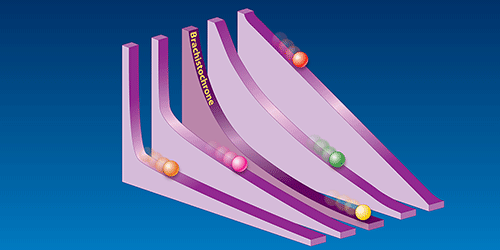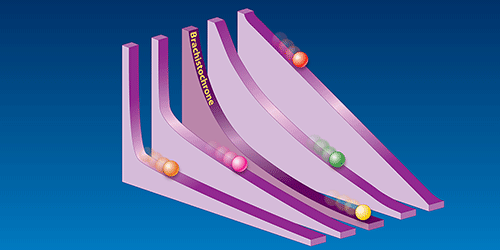Time Optimization in Quantum Computing
The GPS in our cars or phones can give the fastest route to our destination. Such time optimization is also important to quantum computing because faster processes are less likely to succumb to the effects of decoherence. Researchers working with nitrogen vacancy (NV) centers have shown that they can perform an operation on two qubits in the minimum possible time. This shows that so-called time-optimal control is possible for any generic two-input quantum logic gate.
A simple example of a quantum operation is a NOT gate, in which a qubit is “rotated” from the 0 state to the 1 state using a light pulse or other input. Generalizing from this, one can depict an arbitrary operation as a set of rotations around different axes in the quantum state space. However, more than one set of rotations can produce the same outcome. The set with the shortest time can be found using the quantum brachistochrone equation (QBE), which is named after the famous problem of finding the fastest curve for a bead sliding down a slope between two points.
Previous work on minimizing gate operations has been limited to single-qubit systems. In their time-optimal control experiments, Jiangfeng Du, from the University of Science and Technology of China, and colleagues worked with NV centers, which are defects in diamond crystals. The team used microwave pulses to control single-qubit systems as well as double-qubit systems in the NV centers. Using the QBE, they calculated the amplitude and phase of the pulses needed to complete both single-qubit and two-qubit gate operations. The measured time durations of the rotation sets determined with the QBE were faster—by roughly 15% or more—than conventional rotation sets.
This research is published in Physical Review Letters.
–Michael Schirber
Michael Schirber is a Corresponding Editor for Physics based in Lyon, France.





